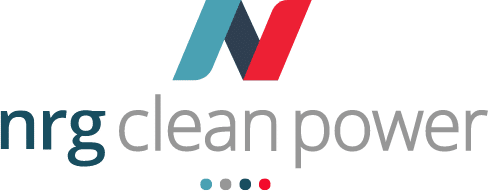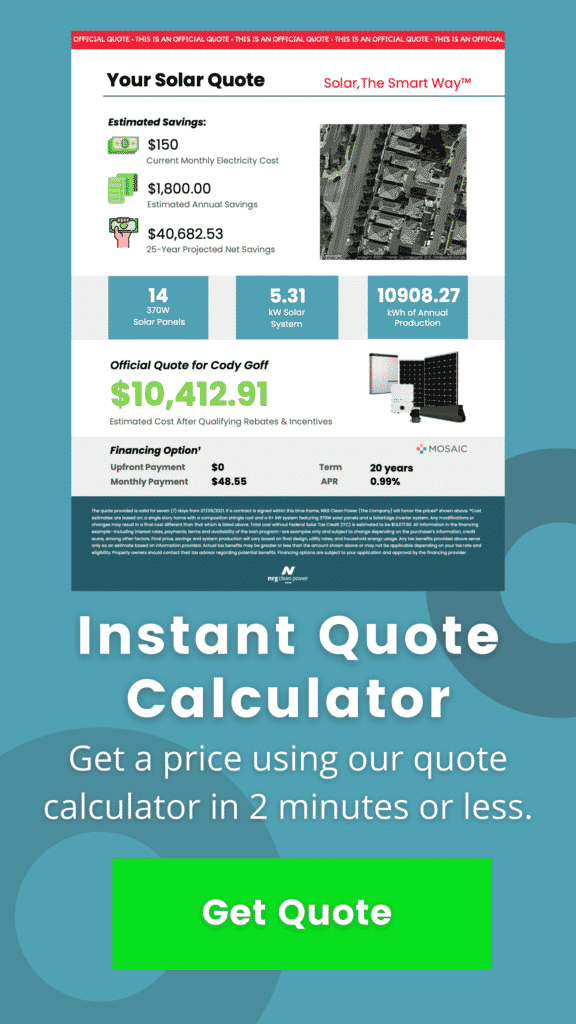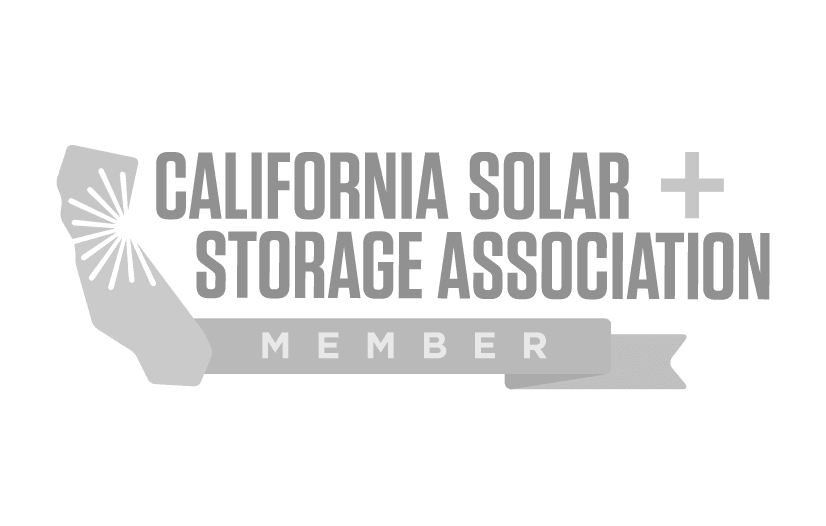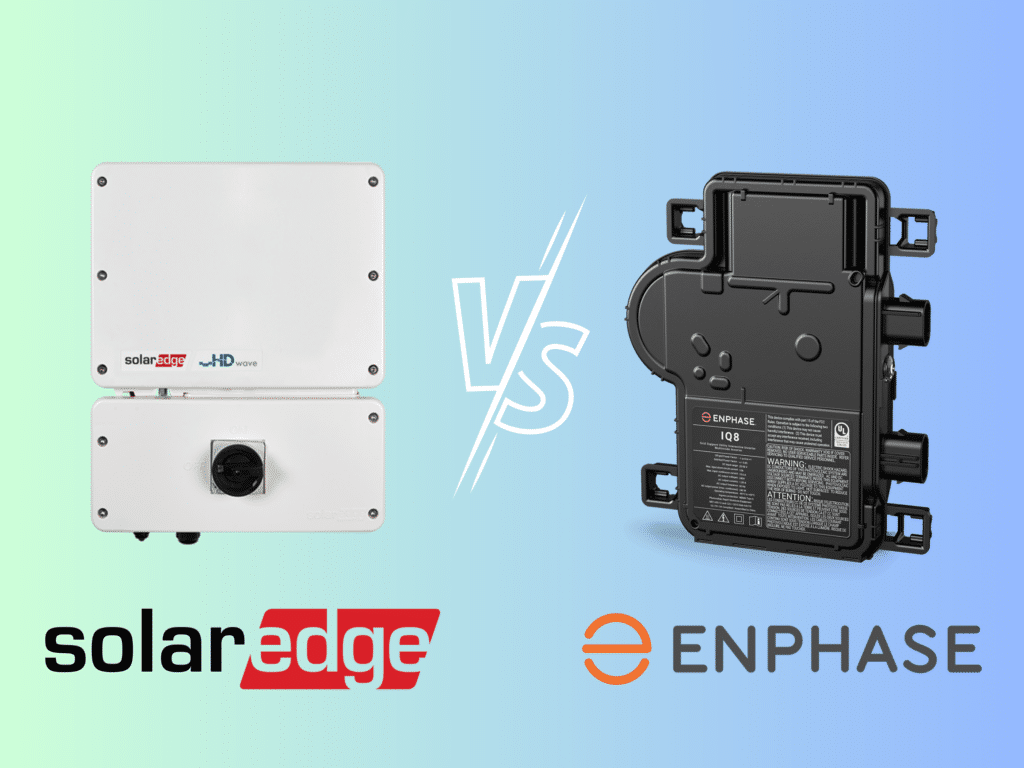
The battle of the inverter titans: these two companies leverage competing technologies and have cultivated a kind of rivalry, SolarEdge vs Enphase, for home- and business owners looking to go solar. SolarEdge and Enphase are the two biggest companies in the solar inverter space. Together they have 95% of the global inverter market share, with Enphase holding 48% and SolarEdge 40% of the U.S. market alone. Our solar experts analyzed both companies’ products to help consumers understand the differences between the two and identify which is right for them.
In order to identify the better inverter type, we must first understand the technology surrounding inverters. We must also look at how it comes into play within the context of a solar array.
Types of Solar Inverters
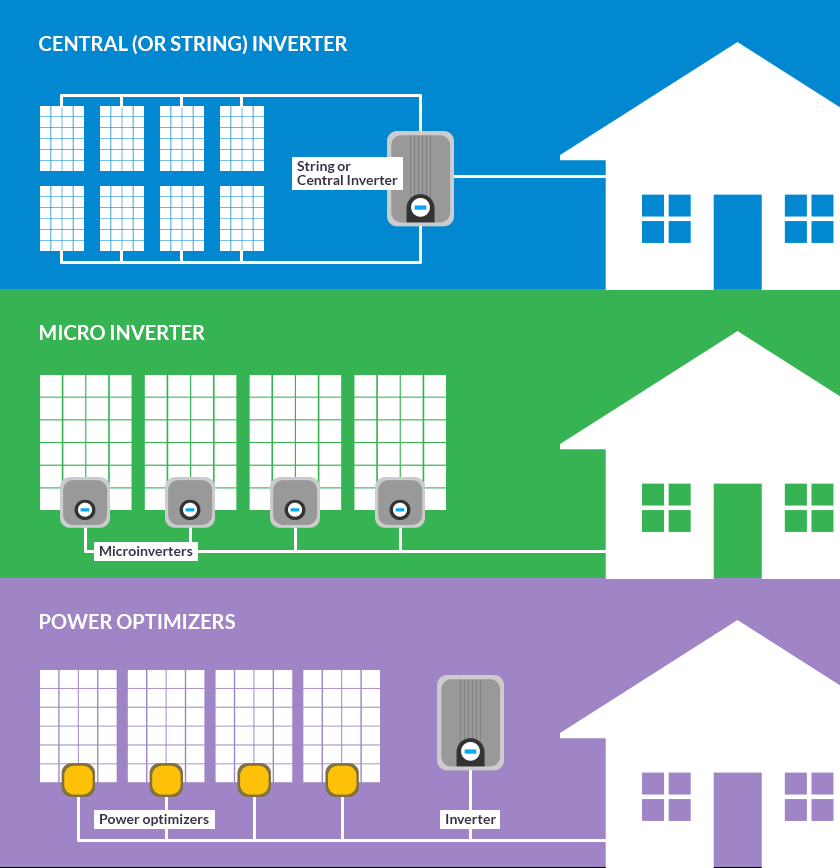
The main function of inverters is to convert the direct current (DC) into alternating current (AC), in order to have usable electricity. Without an inverter to convert current, a solar system would serve practically no purpose at all. As a result, regardless of whether you prefer SolarEdge vs Enphase, they play a vital role in the functionality of a home solar system. While you may find competing information regarding different brands, before deciding which you should choose, you first need to understand the 3 different types of inverters:
- String Inverters (Centralized)
- Microinverter
- Power Optimizer System (String inverters + Power optimizers)
Microinverters and power optimizers are often collectively referred to as Module-Level Power Electronics (MLPEs).
Traditionally, consumers prefer string inverters due to their cost effectiveness and general efficiency for bigger systems. However, Power Optimizer Systems and Microinverters have gained immense popularity in the market. This comes as a direct result of technological advancements which have brought the price significantly lower and the overall module-level capabilities. String inverters have a notorious reputation for their inflexibility and lack of monitoring capabilities; whereas, MLPEs boast much more sophistication.
With that being said, consumers must keep in mind that both SolarEdge and Enphase inverters are MLPEs. SolarEdge inverters leverage Power Optimizer System technology while Enphase uses Microinverter technology.
Enphase
Enphase Energy, founded in 2006, is a publicly held company based in Northern California. They manufacture batteries, inverters, among other solar-related accessories. Their inverters make the solar system more productive, more reliable, smart, and safe for customers to use. Inverters deliver optimized output in an elegant design that is very aesthetic and durable.
SolarEdge
SolarEdge is becoming a popular choice in the USA due to its unique design. The company, with headquarters in Israel, was also founded in 2006 and offers a wide range of inverters for residential and commercial use. The company offers PV Power Optimizers, PV Monitoring Portal, and Solar Inverters. They produce inverters that use power optimizers to maximize power generation from every single panel. Customers benefit the most by knowing that they can have data from monitoring each panel so they can reduce the impact of shading and other performance issues. They are also proven to be safer than other inverter solutions. They are able to maintain lower voltages and shut off immediately in case of an electrical short.
SolarEdge vs Enphase: Scalability
The SolarEdge model does have more limitations regarding scalability when compared to Enphase microinverters. SolarEdge systems are limited to the size of the central inverter which can intake a certain number of solar panels, whereas Enphase microinverters have higher flexibility to scale by simply adding solar panels with compatible microinverters.
Scalability matters to clients who project an increase in their future power demand in case of adding an electric vehicle, or add a large battery backup system for example. Theoretically, you can add an unlimited number of panels (some modifications may be required of course) when you have a microinverter system but you may have to change the central inverter if you want to increase the number of solar panels.
In the argument of SolarEdge vs Enphase as it pertains to scalability, you can easily see a clear winner. Enphase’s ability to scale, and do so retroactively, does provide a leg up. However, not all consumers require the ability to scale in a manner that would have a significant impact.
One the other hand, Enphase’s scalability capabilities, while on paper seem way more robust, are not as sophisticated as they may seem.
Enphase & Backward Compatibility
In the last few years, Enphase has made technological advancements, moving from an earlier model, the MP50, to the IQ series currently on the market. The issue for home- and business owners? Enphase does not make the new IQ models backward compatible. This means that consumers who have an older version of Enphase inverter technology would not have the ability to simply scale. They would still need to purchase all new inverters in order to upgrade their solar array or add on.
SolarEdge vs Enphase: Battery Backup Options
Adding backup battery storage solutions has proven itself as one of the biggest, newest trends in the solar market. Unused solar power is stored in a battery and used when needed during a power outage or when solar production is insufficient to meet the household energy demand. When there is a power outage, a combination of solar and battery is used to power important loads such as the refrigerator, TV, lights and AC outlets, day or night.
SolarEdge StorEdge Backup Solution
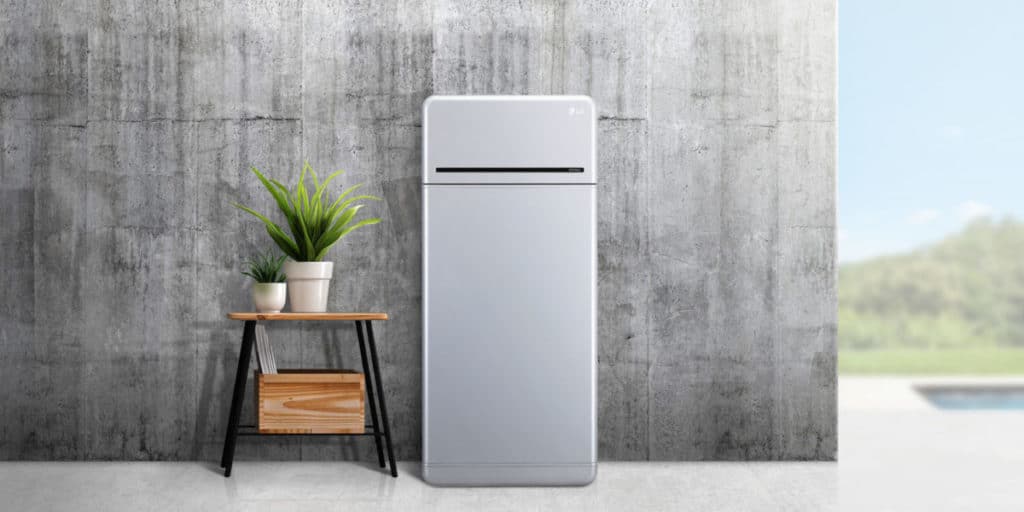
In addition to on-grid capabilities, the StorEdge DC-coupled backup solution automatically provides homeowners with backup power during grid failures. The solution is based on a StorEdge single phase inverter which manages solar production, consumption, storage and backup power, and is compatible with high voltage LG Chem RESU batteries. LG batteries have proven themselves as one of, if not the, best solution on the market. Other more-high-powered backup battery solutions exist; however, LG’s RESU batteries undoubtedly get you the best bang for your buck.
Enphase Ensemble
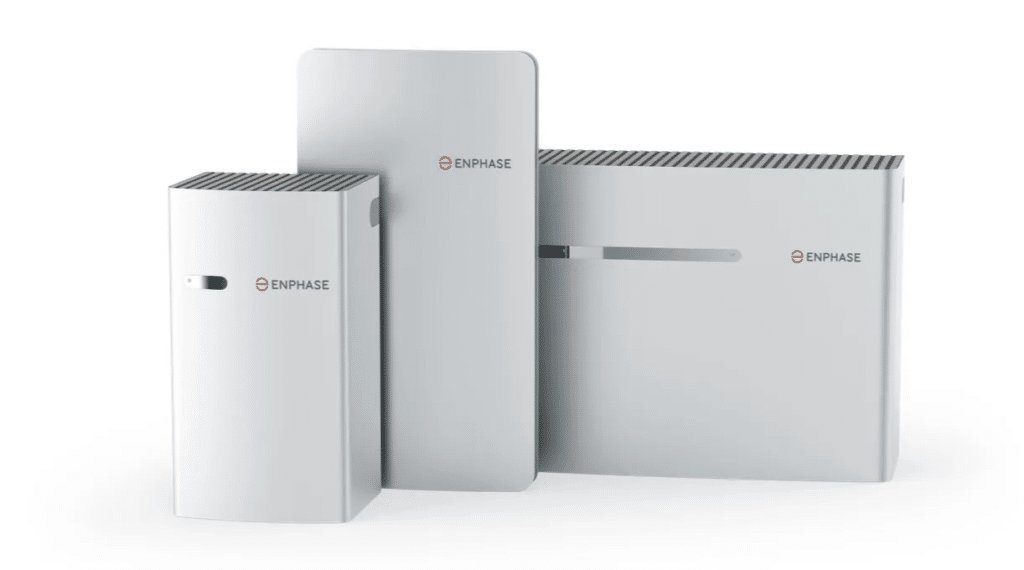
Enphase’s approach to backup batteries differs from SolarEdge substantially. Rather than partnering with a leading manufacturer of batteries, they offer a proprietary battery: the Enphase Ensemble. While normally we would applaud this kind of full-scale offering, the result leaves much to be desired. The Enphase Ensemble costs far more than some of the industry’s best solutions while much less power output and storage capabilities.
If you want to pair a non-Enphase battery with your system, it also only leaves you with a couple choices. Due to the microinverter design, you have to choose an AC-coupled battery, rather than a DC-coupled one.
AC- vs DC-Coupled Batteries
In order to understand the difference between the two brand’s battery capabilities, you must first know the difference between the two technologies. Batteries can only store electricity in DC (direct current). A DC-coupled battery receives the power load before the inverter and can store it directly from the panels, as in the case of SolarEdge. While this comes with its own limitations, in short, it means the power is converted fewer times, increasing overall efficiency.
An AC-coupled battery requires the energy to come into the battery as AC current. These work with Enphase as the electricity in DC gets converted to AC on the roof itself. This type of solution provides for more flexibility but a significantly lower efficiency rating. The reason why? AC-coupled batteries still store electricity as DC, they just have a mini-inverter built in which allows them to receive AC, convert to DC, store, convert back to AC and push to the home.
No one has a definitive answer as to which solution works best, as it will mostly depend on your circumstances, but this is one of the areas in which SolarEdge and Enphase differ the greatest.
SolarEdge vs Enphase: Efficiency
One of the key metrics for any solar system is efficiency. This refers to the amount of light that is converted into electricity. With higher efficiency, you can generate more electricity with fewer solar panels. While consumers see solar panel efficiency featured prominently by manufacturers, inverter efficiency arguably plays just as big of a role. Inverter efficiency refers to the amount of electricity lost during the DC-to-AC conversion.
The majority of solar inverters that you will find on the market these days have an efficiency better than 95%. Some boast efficiency ratings even as high as 99%. This means that the inverter only loses 1% of incoming electricity during the conversion to AC. While inverter efficiency across the board is relatively high, when looking at SolarEdge vs Enphase, consumers will still find a notable difference.
The SolarEdge system has two components: the central inverter, which lists 99% efficiency, and the power optimizer, which lists 99.5% efficiency. This puts the overall efficiency at 99.25%. The Enphase IQ 7 series only converts at 97% efficiency. However, a direct comparison is still difficult considering the different technologies.
Even though SolarEdge’s power optimizers do help the system perform better in partial shade, microinverters are still a superior system when it comes to handling shade and complicated rooftop layouts. Because of this, the overall system efficiency of a microinverter-based system will still usually be a little better than one based on power optimizers. At the same time, Enphase microinverters are notorious for overheating (as you install them on the roof), which can drastically reduce efficiency and life expectancy.
Both SolarEdge and Enphase have continued to innovate, enhancing their product offerings significantly. SolarEdge has recently introduced new optimizers that provide better energy harvesting capabilities, even in shaded conditions, while Enphase has improved its microinverter technology to deliver higher efficiency and better reliability. Additionally, both companies now offer advanced monitoring features, allowing homeowners to track their energy production and consumption more accurately. These updates make both systems even more appealing for those looking to maximize their solar energy efficiency and overall system performance.
All in all, both brands have their pros and cons; however, SolarEdge easily beats out Enphase in efficiency.
SolarEdge vs Enphase: Warranty
|
Warranty Coverage |
SolarEdge |
Enphase |
|
Power Optimizer/Microinverter |
25 years |
25 years |
|
Central Inverter |
12 years |
N/A |
|
Monitoring Systems |
12 years |
None |
When it comes to warranties, you can see that both SolarEdge and Enphase offer similar packages. However, we would be remiss not to mention some of the obvious differences. Enphase microinverters have a 25 year product warranty, the longest in the industry. While SolarEdge power optimizers also have a 25 year warranty, the central inverter only comes with a 12-year warranty. SolarEdge offers 20- and 25-year warranty extensions but requires additional payment.
Both companies’ warranties cover product failures but not installation labor. For both the SolarEdge and Enphase systems, this is why having a 25 year warranty is important. While it’s relatively simple to replace a wall-mounted central inverter, much more labor is required to replace a defective micro inverter or power optimizer that is attached to a solar panel.
Overall Evaluation of SolarEdge vs Enphase
If you have a complex, residential solar installation with partial shading, solar panels mounted on multiple roof segments, or the desire for panel-level monitoring, then both Enphase and SolarEdge inverters offer great solutions to make sure that you get the maximum electricity out of your solar energy system.
In addition, if you think you might want to expand your system in the future—such as to supply electricity for an electric car—then Enphase microinverters offer better expansion flexibility than either power optimizer or string inverter-based systems.
However, if inverter technology warranties find themselves at the top of your priority list, SolarEdge has the edge up when compared to Enphase.
So which should you choose?
While it’s likely that Enphase will cost you slightly more up front, they offer a state-of-the-art solution. This comes mostly as a result of their microinverter technology. However, SolarEdge will allow you the ability to save more, and they really are the tried and true option.
Also, while Enphase may offer a more sophisticated product, they have their limitations. SolarEdge’s real uniqueness comes from its offering of a full suite of products. SolarEdge offers consumers integrated options like electric vehicle charging, consumption monitoring, and more! This is a genuinely substantial offering when comparing SolarEdge vs Enphase, as most homeowners want to expand their solar system beyond just having panels. If you want a full suite of energy efficient products and you want them to work perfectly in sync, SolarEdge definitely has a leg up.
Product Reliability
While Enphase products have had reliability issues in the past, several product iterations have occurred since then, and the general “word on the street” from installers is that there are fewer in-field replacements and dead-on-arrival units with the latest Enphase IQ 7 product lineup. In addition, Enphase has done a good job on the customer side by offering their upgrade program to owners with early generation microinverters that suffered reliability issues. Finally, Enphase inverters come with a full 25-year warranty.
As discussed, SolarEdge Power Optimizers can also be a good choice for complex rooftops and installations with shading issues. However, recently, SolarEdge has had a noticeable increase in reliability concerns. Their latest products, while robust and comparable in theory, do not always function as intended. This creates big issues for consumers in the long run whose solar array should last them up to 20-25 years. Without a strong inverter system, the entire investment can seem like a poor idea.
Conclusion
We cannot argue that there is a reason why these two companies hold almost equal amounts of the market share. They both offer high-level monitoring capabilities and flexibility when it comes to complex installations. However, they also both have their own very distinct sets of pros and cons.
At the end of the day, whether you choose SolarEdge vs Enphase should come as a direct result of an in-depth analysis of your project and energy needs. Each solar installation and design will provide unique insights as to the needs. And, as a result, this will allow you to make the best choice for you. No one can provide an honest, objective, generalized ranking between the two, as they offer completely different technologies and capabilities. That being said, making the switch to solar should come down to value proposition and savings. Work with an experienced solar company, like NRG Clean Power, to see which option will help you optimize your savings!

Authored by Ryan Douglas
NRG Clean Power's resident writer and solar enthusiast, Ryan Douglas covers all things related to the clean energy industry.
